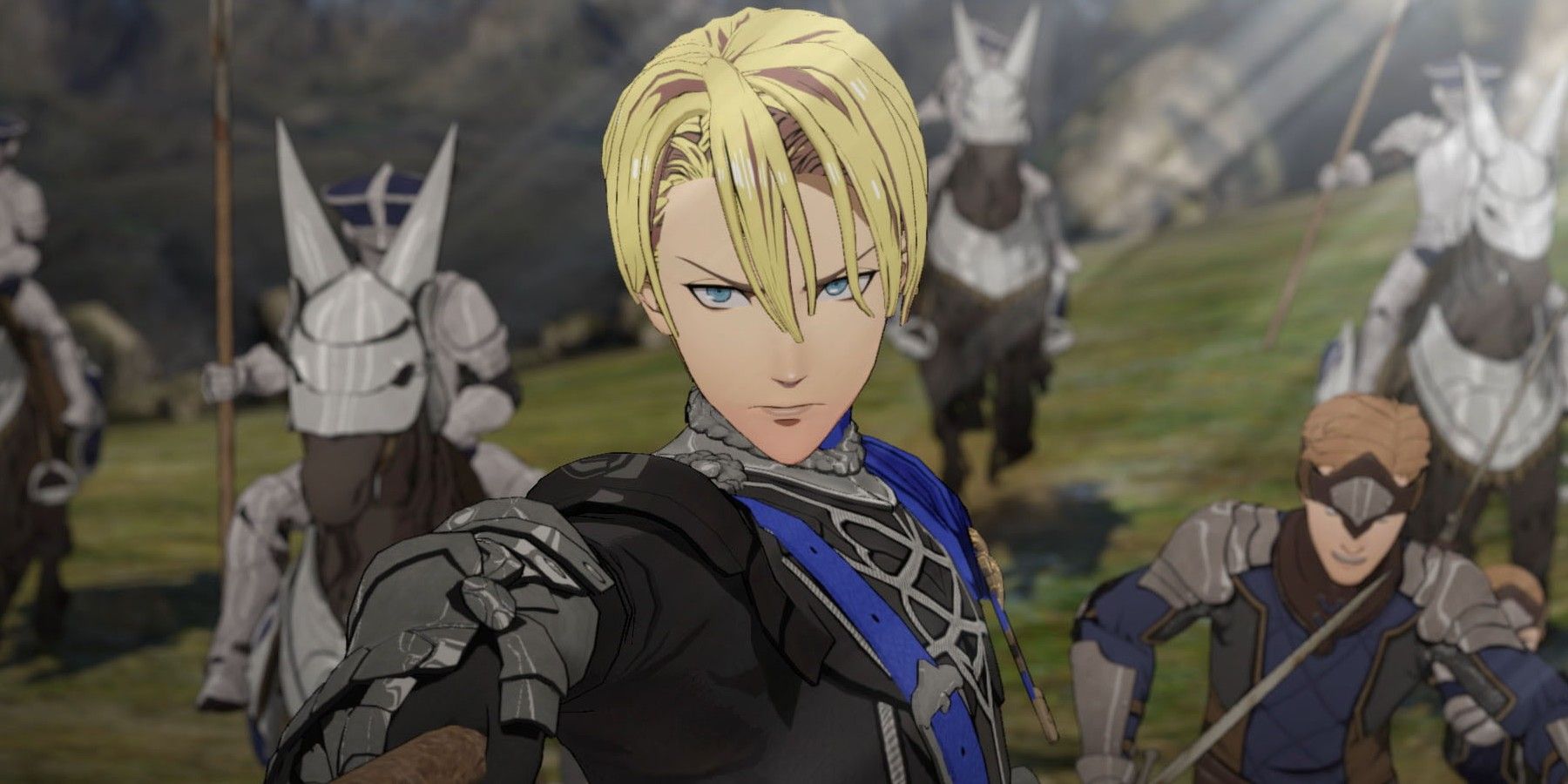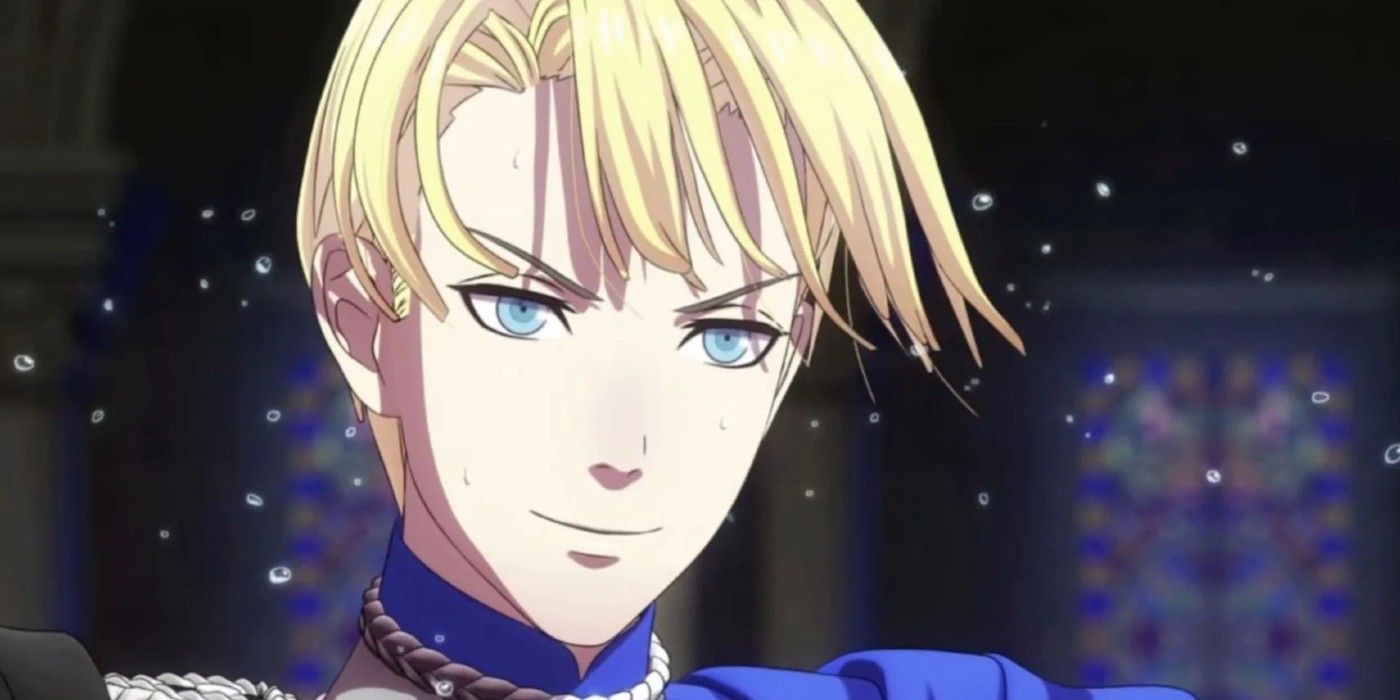Fire Emblem: Three Houses is packed with interesting factions, each of which have their own rich backstory, lore, and political place in the land of Fodlan. The Adrestian Empire has always been the most powerful and wealthy military force in the land, while the Leicester Alliance has merely ridden on its coattails. But rather than be content under the rule of the Empire, the Holy Kingdom of Faerghus rose up and became a fierce rival.
By the time the player comes into contact with the Holy Kingdom of Faerghus in Fire Emblem: Three Houses, its people have become dutiful, fair, and loyal warriors. Residing in the northern regions of Fodlan, the people of Faerghus have had to endure harsh weather conditions for centuries, and as such have developed a stoic and hardened disposition, though their history has left them with complicated political ties.
The History of the Holy Kingdom of Faerghus
Upon the defeat of the King of Liberation, Nemesis, in Imperial Year 98, all Fodlan was unified under the rule of the Adrestian Empire, with the Church of Seiros having a great deal of influence behind the scenes. While some of Fodlan prospered under the absolute rule of the Adrestian Empire, some regions did not, seeking to become independent once more.
In the Imperial Year 747, Loog of House Blaiddyd would lead a rebellion against the Adrestian Empire. Being a direct descendant of one of the Ten Elites, the warriors who fought alongside Nemesis against the Emperor and Seiros in the War of Heroes, Loog was revered as a leader.
In 751, Loog and his rebellion defeated the Emperor, and with mediation from the Church of Seiros, the Adrestian Empire granted the Faerghus people their independence. Loog was then crowned as the first king of this newly independent region, now named the Holy Kingdom of Faerghus.
50 years later, the Leicester region attempted a rebellion against the Adrestian Empire, but failed to gain the support necessary to succeed. In a bid to gain more power for themselves, the Holy Kingdom of Faerghus invaded the weakened Leicester region and took over, annexing the land.
In 861, upon King Klaus' passing, his three sons separated the Holy Kingdom into three segments, the Western kingdom, the Eastern kingdom, and Leicester, and the three ruled as archdukes. Leicester's archduke died in 881, and before his heir could take over, the people of Leicester rebelled once again, causing a conflict known as the Crescent Moon War.
This war ended in 901, resulting in Leicester being granted independence from the Holy Kingdom of Faerghus, thus becoming the Leicester Alliance. 200 years later, the three ruling factions, the Adrestian Empire, the Leicester Alliance, and the Holy Kingdom of Faerghus, all joined forces to build an intimidating fortress named Fodlan's Locket. This would be used to defend against Almyra's invasions.
In 1160, a lethal plague swept across the Holy Kingdom, killing some of the region's nobles and monarchy. King Lambert and a newly born Prince Dimitri managed to survive the plague.
In 1176, King Lambert, and a few of his most trusted advisors, were assassinated, leaving Dimitri as the only surviving heir to the Holy Kingdom. Despite his lineage, however, Dimitri did not assume the throne, with that instead being seized by Lambert's brother Rufus.
While Dimitri was busy proving himself in battle against a western rebellion, Rufus was being heavily criticized for his failures of leadership, which was leading the Holy Kingdom into an era of hardship. By the time the player meets Dimitri and his Blue Lions, the Holy Kingdom of Faerghus is on the decline, and political tensions are high.
Fire Emblem: Three Houses is available now on Switch.


